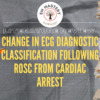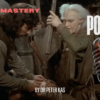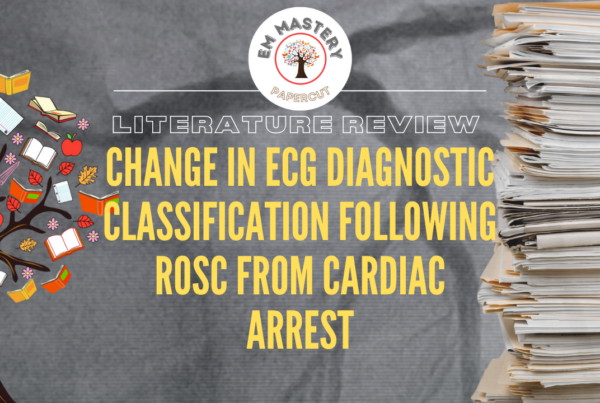www.resustv.com is coming in late APRIL 2010 – videos of lectures on all of acute medicine.
The L.E.M.O.N. approach is just that. An approach to predicting the potentially difficult airway. It is a way of adding some measurable parameters to what should become a ‘gestalt’ approach, where you know or have a ‘vibe’, a feeling, call it what you will, about the relative ease or difficulty of any airway.
This gestalt is usually gained following years of experience BUT it can be taught.
The LEMON rule allows us to remember to look externally and to look at those parameters that will make the intubation simple or difficult.
LEMON stands for:
L – Look externally – Is the patient obese, do they have a high arched palate, a short neck, facial or neck trauma?
E – Evaluate the 3:3:2 rule – 3cm mouth opening, 3cm thyromental distance, 2cm between hyoid bone and thyroid notch. If unsure as to how much a cm is, just use the 3 fingers or 2 fingers approach
M – Mallampati Score – remember a Mallampati 4 is associated with a >10% chance of difficult airway
O – Obstruction – Is there a tumour, epiglottitis, recent neck surgery?
N – Neck mobility – Is the patient in a cervical collar, are they elderly?
OK, so let’s look at what the LEMON Rule really tells us. The most important aspects of it are: can you open your mouth wide enough, can you move your neck to allow better positioning and is there adequate space in the floor of the mouth into which to displace the tongue?
Remember in airway, the tongue is the enemy, the patient’s enemy and yours. The tongue falls backwards into the hypopharynx and is responsible for obstructing the airway in most cases. The goal is to clear the tongue out of the way, or at least to lift it, so that we can ventilate. This is what procedures like chin lift and jaw thrust do. Movement of the mandible, to which the tongue is attached, moves the tongue.
When intubating, we need to have adequate room, to get the laryngoscope blade in, as well as the endotracheal tube and be able to see. We then need to displace the tongue with the laryngoscope blade. The only real place to displace it into is the floor of the mouth. There has to be adequate volume at the base of the mouth to push the tongue into. This is why patients with micrognathia can be so difficult to intubate, they have an inadequately sized lower jaw, and so almost no place to displace the tongue into.
How useful is predicting really? The reality is that it doesn’t change the fact that you need to secure the airway stat. These patients are not elective patients, but come in in a decompensated state and need immediate assistance.
The ability to predict the potentially difficult airway is useful in that it puts you in the right frame of mind, you start thinking about alternatives should you not be able to intubate.
One of the greatest dangers in any life saving procedure is to get fixated. “I’ve got to get the tube, I’ve got to get the tube, I’ve got to get the tube.” You try again and again and the patient starts to desaturate and now you are playing catch-up. With the ability to predict a potentially difficult airway, you may say to yourself, I’ll try a tube and it should be in if I use all those techniques that I’ve learnt, like using an introducer in the endotracheal tube and bending the end at 35-40 degrees, getting correct positioning and even getting an assistant to open the mouth further for me by pulling the cheek further open. If I can’t tube, I may try again, or go straight to a bougie. It’s this thought process that allows you to see the big picture and not fixate.











[…] 3-3-2 rule, Malempati, Obstruction of the airway, Neck Mobility. It has been well rehashed here and here (video). Some (2), however, have suggested it might be challenging to apply to ED […]
The LEMON approach for predicting the difficult airway – Resus
[url=http://www.gx9c9u7xnnartv8562is421456s6qj75s.org/]udqooodzet[/url]
adqooodzet
dqooodzet http://www.gx9c9u7xnnartv8562is421456s6qj75s.org/
3296W-1-105
ChristianLouboutinクリスチャンルブタン財布コピー
Diorディオールネックレス販売店
Battery Connector
コピー時計
Hot Dip Galvanizing Stayed Rod
Gear Wheels 22×12
ブランドGucciグッチバッグコピー代引き
ブランドGucciグッチ指輪コピーN級品
Hexagonal Wall Light
Chanelシャネル時計スーパーコピー
Heavy Metal- Free Pvc Pellet
Cng Cylinder Cost
Balenciagaバレンシアガ帽子スーパーコピー
コピー時計
Airtight Glass Jar With Lid
Back Seal & Back Seal Fold Bag
スーパーコピーバッグ
ブランドコピー専門店
Mushroom Extract
Drone Event Banner
ブランド時計コピー
LouisVuittonルイヴィトンブレスレットコピー
squatting bowl
ブランドChanelシャネル時計コピーN級品
Low Viscosity Platinum Silicone
Cartierカルティエスーパーコピー
15 Inch Passive Radiator
10kg White Japanese Panko
ブランドコピーGucciグッチN級品
Bubble Packaging Supplier
Omegaオメガ時計販売店
ブランドMCMエムシーエムバッグコピー代引き
Featured Products Supplier
Butterfly Charm Bracelet
ブランドBurberryバーバリーバッグコピーN級品
Hermesエルメスバッグコピー
Bathroom Door Lock Parts Supplier
MCMエムシーエムバッグ販売店
Double Zero Foil
ブランドサングラス販売店
Hefei Xinghai Yuan Energy Technology Co., Ltd.
Guangzhou Smart Truss Stage Equipment Factory
Chanelシャネルイヤリング販売店
200w 300w 400w Laser Welder
SaintLaurentサンローランコピー激安
Cnc Machining Companies Near Me
Gucciグッチ帽子販売店
Copper Metal Strips
ブランド財布コピー
ブランドコピー専門店
buttonblank
NKNP Non-Inductive Wound Resistors Flameproof
ブランドコピー代引き
Hyundai Camshaft Position Sensor
ブランドバッグコピー
30HP Industrial Air Cooler
2 Ml Microcentrifuge Tubes Screw Cap
Inositol
Battery Lifepo4 280ah
ブランドコピー専門店